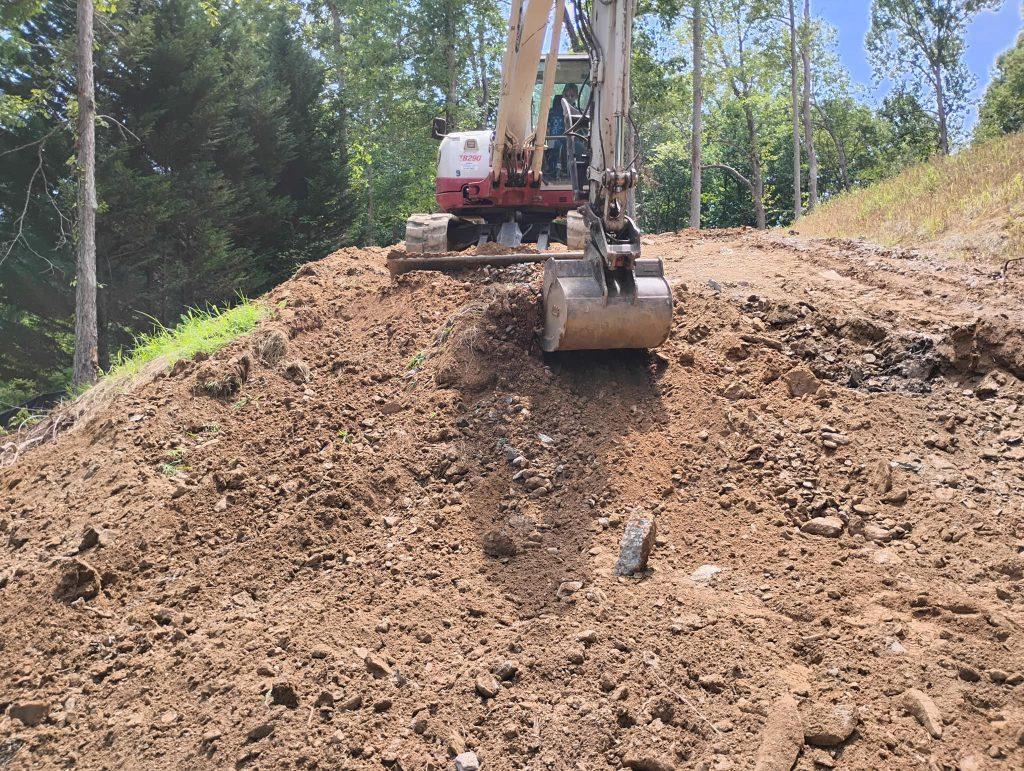
Storm Drain Installation Services in Bowie, TX & Surrounding Areas
Storm drain installation is a vital part of infrastructure and property development in Bowie, Texas, and nearby towns such as Nocona, Henrietta, Jacksboro, Decatur, and Gainesville. Properly designed and installed storm drains protect homes, businesses, and public spaces from flooding, soil erosion, and water damage. In this guide, we answer common questions about storm drain services, safety, costs, and contractor selection in Bowie, TX and surrounding areas.
What Do Storm Drain Contractors in Bowie, TX Do?
Storm drain contractors in Bowie, TX handle the design, installation, and maintenance of drainage systems that redirect rainwater away from properties and roadways. Their work typically includes trench excavation, pipe installation, inlet and manhole construction, grading, and backfilling. These services help ensure compliance with municipal drainage codes while protecting homes, businesses, and landscapes from long-term water damage.
Why Is Storm Drain Installation Important for Residential and Commercial Properties?
Storm drains are essential for managing heavy rainfall in Texas. For homeowners, they protect foundations, driveways, and landscaping from water intrusion and pooling. For commercial sites, they safeguard parking lots, roadways, and building structures from water accumulation. Without effective storm drain systems, flooding can damage pavement, increase soil erosion, and weaken the stability of both residential and commercial properties.
How Do Bowie Storm Drain Contractors Ensure Safety and Compliance?
Contractors in Bowie and nearby towns follow regulations set by the Texas Commission on Environmental Quality (TCEQ) as well as local municipal codes. Safety is maintained through practices such as trench shoring and barricading, along with the use of proper personal protective equipment for workers. Environmental safeguards like erosion prevention techniques and sediment control barriers are also implemented to ensure compliance and to protect surrounding communities during installation.
What Types of Storm Drain Systems Are Commonly Installed?
The type of storm drain system depends on property needs and site conditions. Surface drains are often used to collect rainwater from driveways, lawns, and small parking areas. French drains are installed below the ground to redirect groundwater and reduce pooling issues. Larger-scale projects may require curb inlets and catch basins, which are commonly used in commercial sites and urban streets. In some cases, underground piping networks are constructed to direct runoff toward retention ponds or municipal storm sewer systems.
Do Grading and Excavation Support Storm Drain Installation?
Grading and excavation are fundamental to effective storm drain installation. Grading shapes the land to create proper slopes, allowing water to flow efficiently into the drainage system. Excavation provides the trenches required for pipes, inlets, and catch basins. In Bowie and nearby towns such as Decatur and Henrietta, these processes are carefully planned to address local soil conditions, prevent standing water, and optimize the overall effectiveness of the drainage system.
What Factors Affect the Cost of Storm Drain Installation in Bowie, TX?
The cost of storm drain installation varies based on several key factors. Project size and system design are major considerations, with larger commercial systems requiring more materials and labor than smaller residential systems. Soil type and excavation depth can increase costs when conditions are challenging. The choice of materials, such as PVC, concrete, or HDPE pipes, also influences the final price. Additional expenses may include permits, grading, erosion control measures, and restoration of landscaping after installation. Residential systems often cost a few thousand dollars, while commercial projects may require significantly higher budgets due to their complexity.
How Long Does Storm Drain Installation Take?
Project timelines are determined by the size of the system, weather conditions, and the permitting process. Smaller residential systems can often be completed within a few days. Larger commercial drainage networks in Bowie, Jacksboro, or surrounding areas may take several weeks to install. Many contractors use advanced equipment such as GPS-guided trenching machines to increase accuracy and efficiency, allowing projects to move forward without unnecessary delays.
Why Choose Local Contractors in Bowie, TX and Surrounding Areas?
Working with local contractors offers many advantages. Contractors based in Bowie and surrounding towns such as Nocona, Gainesville, Henrietta, and Decatur have experience with the region’s soil conditions, weather challenges, and building codes. This local expertise allows them to anticipate drainage issues such as clay-heavy soils and seasonal flooding, and to design customized solutions that meet both residential and commercial needs. Hiring local professionals also helps ensure projects remain compliant with municipal regulations and are completed more efficiently.
Final Thoughts
Professional storm drain installation in Bowie, TX and neighboring towns ensures long-term property protection, efficient water management, and compliance with drainage codes. By combining excavation, grading, and modern drainage techniques, local contractors deliver reliable systems that safeguard against flooding and erosion. Choosing experienced storm drain professionals not only protects your investment but also adds long-term value to your property.
Do I need a permit for storm drain installation in Bowie, TX?
Yes. Most storm drain projects require permits from the City of Bowie or Montague County. Contractors usually handle the paperwork and ensure compliance with TCEQ and municipal codes.
How do I know if my property needs a storm drain system?
If you experience frequent flooding, standing water, soil erosion, or foundation issues during heavy rains, a storm drain system is likely necessary to manage runoff.
Can storm drains be installed on existing properties, or only new builds?
Storm drain systems can be installed on both new construction projects and existing properties. In older properties, contractors may need to adjust grading or retrofit systems for better water flow.
What’s the difference between French drains and surface drains?
French drains are subsurface systems designed to redirect groundwater, while surface drains collect rainwater from driveways, lawns, or paved areas and channel it away from the property.
How often should storm drains be inspected or maintained?
Storm drains should be inspected annually and after major storms. Regular maintenance, such as clearing debris from inlets and checking for pipe blockages, helps extend system life.

